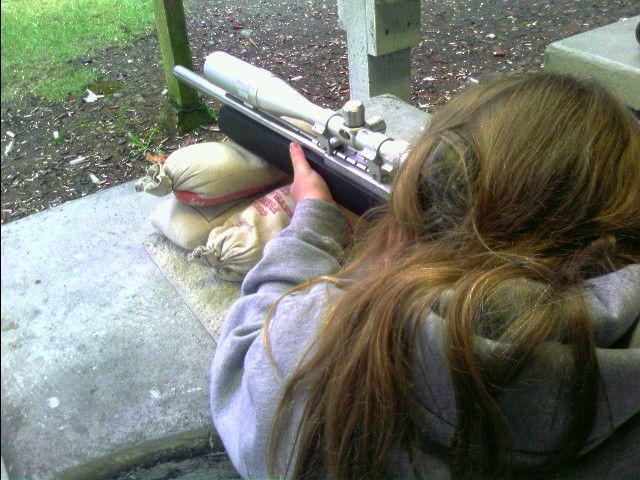Should guns come with age restrictions?
The accidental death of a shooting instructor in Arizona has many wondering whether kids and guns should ever mix.
This article is the first in a three-part series on recently proposed gun control measures.
At an Arizona shooting range in August 2014, a nine-year-old girl who was being instructed in the handling of an Uzi lost control when the gun recoiled. One of the bullets that shot out of the gun hit her instructor in the head, killing him. The girl had been able to successfully shoot the gun while it was in single-shot mode, but when the weapon was switched to its automatic setting, the force of the shots caused the child to lose control of the weapon.
In twenty-one states, including North Carolina, young children are allowed to shoot guns of all kinds if supervised by an adult. At the same time, certain classes of weapons are already subject to restrictions by the government. The tragic accident in Arizona raises the question, should the government impose minimum age restrictions on the use of certain weapons? In the Supreme Court cases that have addressed the Second Amendment, none have addressed the interplay between age and the type of weapon.
In the case of District of Columbia v. Heller, U.S. Supreme Court ruled that the District of Columbia could not curtail the rights of people to use handguns by requiring that gun owners keep their weapons disassembled and locked up. The Court emphasized that handguns are weapons that have traditionally been used by Americans for self-defense, and legislating otherwise would be a significant infringement upon that right. In the case of McDonald v. Chicago, which followed the Heller case, the Court clarified that the right to bear arms is an individual right and that it is not limited to those who are in the military.
Uzis and other semi-automatic weapons, however, are not guns that have traditionally been used by citizens for self-defense. For that reason, Supreme Court cases on the subject would indicate that the government is constitutionally permitted to regulate these kinds of weapons.
The right to bear arms is a significant individual right, but it is not without limit.
The case of United States v. Miller established the principle that particular categories of weapons may be regulated by the government. The case involved a defendant who claimed that the right to bear arms extended to sawed-off shotguns. The Supreme Court rejected this argument, stating that because such weapons are not intended to “promote the common defense.” In turn, the defendant was not allowed to possess the weapon. A sawed-off shotgun is dangerous because it is impossible to predict where the bullets that it projects will go. In the same way, using an Uzi in automatic mode is dangerous because it is impossible to predict where the bullets that it shoots will go if handled by an inexperienced shooter.
A long line of federal statutes in the United States have been used to support the efforts of gun control advocates to establish some parameters for controlling access to dangerous weapons that are not typically possessed by civilians. Automatic weapons have been subject to regulation by Congress for nearly eighty years, since the enactment of the National Firearms Act of 1934. The most recent piece legislation that dealt with weapons such as the Uzi was the 1994 Public Safety and Recreational Firearms Use Protection Act, more commonly known as the “Federal Assault Weapons Ban.” The Assault Weapons Ban’s operation lasted for ten years and after its expiration in 2004, Congress was unable to garner enough votes for its renewal.
The tragic events that took place in Arizona demonstrate the difficulty that legislatures face in attempting to pass legislation that promotes gun safety. The shooting range where this tragic accident occurred was in full compliance with Arizona’s gun laws.
Banning children under a certain age from going to a shooting range would likely do society a disservice because one of the most effective means of training children to use firearms responsibly and to respect the power of these weapons is to train them to use real guns in a safe way. The laws that Congress and state legislatures pass operate primarily in a black or white manner; the law either applies or it does not. In contrast, situations like the one at the Arizona shooting range are highly dependent on the facts. Whether a child or adult can successfully handle a powerful firearm is dictated to a large extent by the strength of that person, something that an instructor at a gun range will be in a much better position to determine than a far-off legislator.





